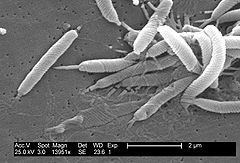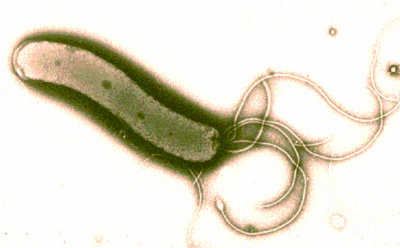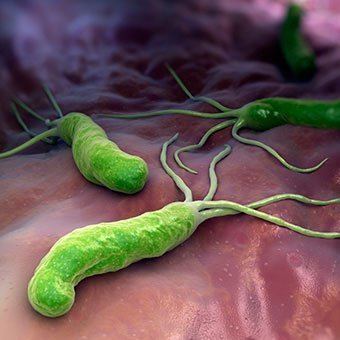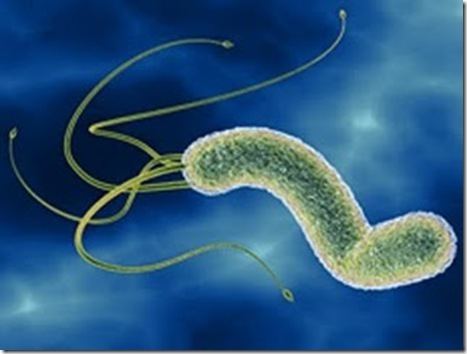Scientific name Helicobacter | Family Helicobacteraceae Higher classification Helicobacteracae Rank Genus | |
 | ||
Lower classifications Helicobacter pylori, Helicobacter cinaedi | ||
Helicobacter is a genus of Gram-negative bacteria possessing a characteristic helical shape. They were initially considered to be members of the Campylobacter genus, but in 1989, Goodwin et al. published sufficient reasons to justify the new genus name Helicobacter. The Helicobacter genus contains about 35 species.
Contents

Some species have been found living in the lining of the upper gastrointestinal tract, as well as the liver of mammals and some birds. The most widely known species of the genus is H. pylori, which infects up to 50% of the human population. It also serves as the type species of the genus. Some strains of this bacterium are pathogenic to humans, as they are strongly associated with peptic ulcers, chronic gastritis, duodenitis, and stomach cancer.

Helicobacter species are able to thrive in the very acidic mammalian stomach by producing large quantities of the enzyme urease, which locally raises the pH from about 2 to a more biocompatible range of 6 to 7. Bacteria belonging to this genus are usually susceptible to antibiotics such as penicillin, are microaerophilic (optimal oxygen concentration between 5 and 14%) capnophiles, and are fast-moving with their flagella.

Damage from helicobacter pylori
Molecular signatures

Comparative genomic analysis has led to the identification of 11 proteins which are uniquely found in the Helicobacteraceae. Of these proteins, seven are found in all species of the family, while the remaining four are not found in any Helicobacter strains and are unique to Wollinella. Additionally, a rare genetic event has led to the fusion of the rpoB and rpoC genes in this family, which is characteristic of them.
Non-Helicobacter pylori species
Recently, new gastric (H. suis and H. baculiformis) and enterohepatic (H. equorum) species have been reported. H. pylori is of primary importance for medicine, but non-H. pylori species, which naturally inhabit mammals (except humans) and birds, have been detected in human clinical specimens. These encompass two (gastric and enterohepatic) groups, showing different organ specificity. Importantly, some species, such as H. hepaticus, H. mustelae, and probably H. bilis, exhibit carcinogenic potential in animals. They harbour many virulence genes and may cause diseases not only in animals, but also in humans. Gastric species such as H. suis (most often), H. felis, H. bizzozeronii, and H. salomonis have been associated with chronic gastritis and peptic ulcers in humans and, importantly, with higher risk for MALT lymphoma compared to H. pylori. Enterohepatic species e.g., H. hepaticus, H. bilis, and H. ganmani, have been detected by PCR, but still are not isolated from specimens of patients with hepatobiliary diseases. Moreover, they may be associated with Crohn's disease and ulcerative colitis. The significance of avian helicobacters (H. pullorum, H. anseris, and H. brantae) also has been evaluated extensively. H. cinaedi and H. canis can cause severe infections, mostly in immunocompromised patients with animal exposure. Briefly, the role of these species in veterinary and human medicine is increasingly recognised. Several other topics such as isolation of still uncultured species, antibiotic resistance and treatment regimens for infections and pathogenesis and possible carcinogenesis in humans should be evaluated.

